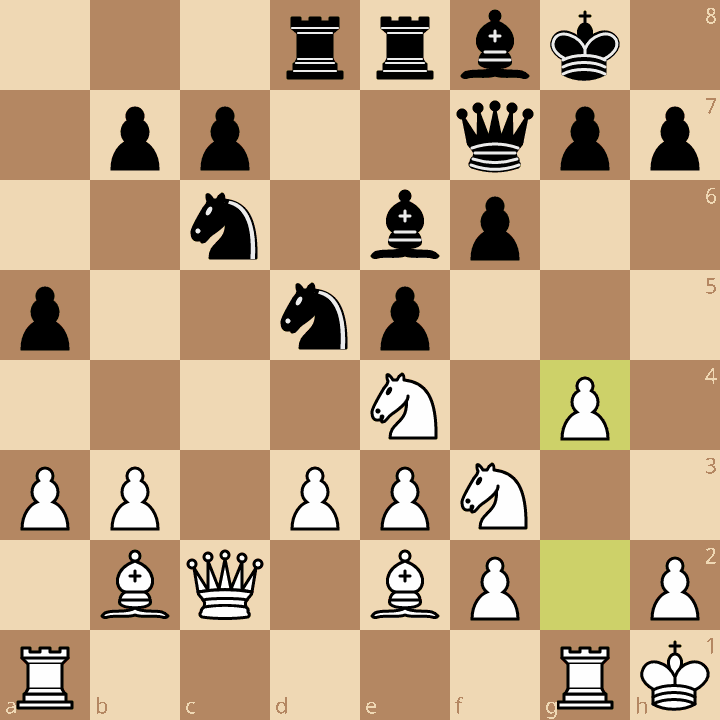One Small Case For Studying Chess Chronologically
What Morphy taught Fischer, and what Fischer can teach you
One common piece of advice given today to improving chess players is to study the games of the masters to learn how to play the game better. Another, less common suggestion is to study chess games in chronological order. I’ve been doing this for the past three years and have enjoyed this quite a bit.
I am taking a slight deviation at the moment, reading IM John Donaldson’s Bobby Fischer and His World. It’s more for enjoyment than improvement, but nevertheless it’s inspiring to read. About halfway through the book Donaldson tells the story of how Fischer made important contributions for a very peculiar pawn structure in chess lovingly referred to as The Hedgehog.
Now, as a meme and as a principle, openings named after animals tend to be dubious. The Hedgehog formation manages to evade this critique, as does the Hippopotamus Defense which was adopted by Fischer’s contemporary and predecessor world champion Boris Spassky.
Here’s the Hedgehog formation from Black’s perspective.
While there are a lot of interesting ideas in this configuration (and in fact, it can arise from many openings, including the Sicilian Kan/Taimanov, Queen’s Indian Defense, Symmetrical English, etc), one idea that Fischer recovered in such a setup was the plan to move the king to the h-file, and then in some order start a kingside attack with the g-pawn, and support it by moving the rook to where the King used to be.
Fischer was a student of the classics before him. He was known for resurrecting old ideas from Steinitz, but he also drew inspiration from Morphy — and not just his tactical acumen and accuracy, but his attacking plans. Nowadays this idea of Kh8, Rg8, g7-g5 is very well-known. But before then, Fischer probably got it from his American chess forbear, who debuted this idea in a double-blindfold game against German master Louis Paulsen around the time of the 1957 New York Chess Congress:
Morphy’s plan was extremely creative at the time. 15…Kh8! 16.Nd1 g5!
And White is facing a serious attack along the g-file. Black wants to pry open the file and bring the rooks down to bear upon White’s kingside and there’s not much Black can do about it.
17.Nf2 Rg8 18.Nd3 g4!
White is trying to get rid of Black’s strongly posted knight to reduce the number of attackers available, but Black’s pieces have all the squares they need to pick up the slack.
19.Nxe5 dxe5 20.hxg4 Bxg4
White goes down hard in a few moves.
21.Qf2 Rg6! 22.Qxf7 Be6 23.Qxc7 0-1
Here Paulsen resigned, because Morphy announced checkmate in five starting with 23…Rxg2+!! The attacking plan to double the rooks down the g-file and apply terrible pressure was clearly good, so Fischer decided to reveal this idea against Ulf Anderson — and with the White pieces!
“1.e4 Best by Test” Fischer already gave a surprise by opening with the Nimzo-Larsen Attack (1.b3), and has awoken the Hedgehog from its slumber with reversed colors.
13.Kh1!
Fischer revives Morphy’s old attacking plan. (13.d4, a standard breaking move in this sort of English structure looks good too, but the plan to break open on the kingside right away is more straightforward and tempting for Fischer).
13…Qd7 14.Rg1!
14…Rad8 15.Ne4 Qf7 16.g4!
Ulf’s position is still fine, and in fact, the preponderance of material on the kingside means that Fischer has to show accuracy and wait for Anderson slip up against the attack.
16…g6?
This looks like a natural move to me. g7 is a decent place for the f8 bishop; Black is also trying to dissuade knight hops in the vicinity of the king. But Bobby’s got a different plan.
17.Rg3! Bg7 18.Rag1 Nb6 19.Nc5 Bc8
By some queenside action, White has motivated Black to reduce his presence near the kingside. Fischer is playing things slow and patiently, but his attack is still roiling. A few moves later, Fischer has managed to push back most of Ulf’s pieces back, while his are surging forward to the kingside.
22.Nf5!
Fischer sinks his knight into f5 like a knife, and Anderson can’t take it with his pawn without opening up the g-file and spelling certain doom for his king, whereas taking with the bishop leads to more pressure on the g6-square. Fischer took another 21 moves to finish Ulf Anderson off, but clearly his attacking strategy, straight out of Morphy’s playbook, was successful.
The connection of themes and attacking plans and ideas between these two games is rather organic and straightforward, and therefore multiple authors besides Donaldson have made this observation (Beim’s Morphy: A Modern Perspective, Alex Colovic). I just thought it was a cool example of newer players reviving plans from older games and bringing them back to modern play with great results.
Fischer did that a lot.














